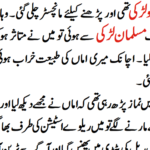Hormonal acne is a common skin condition that affects millions of people worldwide, primarily teenagers and women. Unlike typical acne, hormonal acne is influenced by fluctuations in hormone levels, making it more persistent and challenging to treat. It often manifests as deep, painful cysts or nodules on the lower face, jawline, and neck, although it can also affect other areas like the chest and back. This article will explore the causes of hormonal acne, how to identify it, and effective strategies for managing and treating it to achieve clearer skin.
Understanding Hormonal Acne
Hormonal acne is primarily caused by fluctuations in hormone levels, particularly androgens such as testosterone. These fluctuations can lead to an increase in sebum production, which can clog pores and create an environment conducive to bacterial growth, leading to inflammation and acne.
Common Triggers of Hormonal Acne
- Puberty:
During puberty, both boys and girls experience a surge in androgen hormones, which can lead to increased sebum production and the development of acne. - Menstrual Cycle:
Many women experience acne flare-ups in the days leading up to their menstrual period due to fluctuations in estrogen and progesterone levels. - Polycystic Ovary Syndrome (PCOS):
PCOS is a common endocrine disorder that can cause hormonal imbalances, including elevated androgen levels, leading to acne. - Pregnancy:
Hormonal changes during pregnancy can also lead to acne flare-ups, especially during the first trimester. - Menopause:
Hormonal fluctuations during menopause, including a decrease in estrogen levels, can contribute to acne in older women. - Stress:
Stress can trigger the release of cortisol, a hormone that can increase oil production in the skin and exacerbate acne. - Diet:
Certain foods, particularly those high in refined sugars and dairy, may contribute to hormonal imbalances and worsen acne in some individuals.
Identifying Hormonal Acne
Hormonal acne typically presents in a specific pattern and has distinctive characteristics:
- Location: Hormonal acne commonly appears on the lower face, jawline, chin, and neck, although it can also affect the chest and back.
- Type of Lesions: It often manifests as deep, cystic lesions that are painful and inflamed. These lesions can be challenging to treat and may leave scars if not properly managed.
- Timing: Hormonal acne often coincides with hormonal fluctuations, such as during the menstrual cycle or periods of high stress.
How to Manage Hormonal Acne Effectively
Managing hormonal acne requires a multifaceted approach that includes skincare, lifestyle changes, and, in some cases, medical treatments. Here are some effective strategies for managing hormonal acne:
1. Skincare Routine for Hormonal Acne
A consistent skincare routine is essential for managing hormonal acne and keeping breakouts under control. Here’s a simple yet effective skincare regimen:
a. Cleansing
Why It Works:
Cleansing helps remove excess oil, dirt, and impurities from the skin, preventing clogged pores and acne formation.
How to Do It:
- Use a gentle, sulfate-free cleanser formulated for acne-prone skin. Look for ingredients like salicylic acid or benzoyl peroxide, which help exfoliate the skin and unclog pores.
- Cleanse your face twice daily, in the morning and evening. Avoid over-cleansing, as it can strip the skin of its natural oils and lead to increased oil production.
b. Exfoliation
Why It Works:
Exfoliation helps remove dead skin cells and prevent them from clogging pores, reducing the risk of acne breakouts.
How to Do It:
- Use a chemical exfoliant containing alpha-hydroxy acids (AHAs) or beta-hydroxy acids (BHAs). Salicylic acid, a BHA, is particularly effective for treating acne as it penetrates deep into the pores and helps clear them of oil and debris.
- Exfoliate 2-3 times a week, depending on your skin type and tolerance. Avoid physical scrubs, which can irritate inflamed skin and worsen acne.
c. Spot Treatments
Why It Works:
Spot treatments can help target individual pimples and reduce inflammation, speeding up the healing process.
How to Do It:
- Apply a spot treatment containing benzoyl peroxide, sulfur, or tea tree oil directly to the affected area. These ingredients help kill bacteria, reduce inflammation, and dry out pimples.
- Use spot treatments as needed, preferably at night, to allow the active ingredients to work overnight.
d. Moisturizing
Why It Works:
Moisturizing helps maintain the skin’s natural barrier and prevents it from becoming overly dry, which can lead to increased oil production and worsen acne.
How to Do It:
- Use a lightweight, non-comedogenic (won’t clog pores) moisturizer that suits your skin type. Gel-based moisturizers are ideal for oily or acne-prone skin.
- Apply moisturizer after cleansing and applying treatments to keep the skin hydrated and balanced.
e. Sun Protection
Why It Works:
Sun protection is crucial for preventing hyperpigmentation and scarring from acne. Some acne treatments can also make the skin more sensitive to the sun.
How to Do It:
- Use a broad-spectrum sunscreen with an SPF of at least 30 every day, even on cloudy days.
- Reapply sunscreen every two hours when outdoors and choose a non-comedogenic formula to prevent clogging pores.
2. Lifestyle Changes to Manage Hormonal Acne
Making certain lifestyle changes can help manage hormonal acne and support overall skin health:
a. Maintain a Balanced Diet
Why It Works:
Diet plays a crucial role in overall skin health. Certain foods can trigger hormonal fluctuations and exacerbate acne in some individuals.
How to Do It:
- Limit your intake of high-glycemic foods like white bread, sugary snacks, and processed foods, which can cause spikes in blood sugar and insulin levels, potentially worsening acne.
- Reduce dairy consumption, particularly skim milk, as some studies suggest a link between dairy intake and acne severity.
- Include more whole foods in your diet, such as fruits, vegetables, lean proteins, and healthy fats, to support balanced hormone levels and skin health.
b. Stay Hydrated
Why It Works:
Proper hydration helps flush toxins from the body and maintain skin elasticity, potentially reducing the severity of acne breakouts.
How to Do It:
- Drink at least 8 glasses of water daily to stay hydrated.
- Limit your intake of sugary drinks and caffeine, which can dehydrate the skin and worsen acne.
c. Manage Stress
Why It Works:
Chronic stress can trigger the release of cortisol, a hormone that increases oil production in the skin and can lead to acne flare-ups.
How to Do It:
- Practice stress-reducing techniques like yoga, meditation, deep breathing exercises, or journaling.
- Incorporate regular physical activity into your routine, as exercise helps reduce stress and improve overall skin health.
d. Get Enough Sleep
Why It Works:
Adequate sleep is essential for skin repair and regeneration. Lack of sleep can disrupt hormonal balance and lead to increased oil production and acne.
How to Do It:
- Aim for 7-9 hours of quality sleep per night to support healthy skin and overall well-being.
- Establish a regular sleep routine and create a relaxing environment to promote better sleep.
3. Over-the-Counter (OTC) Treatments for Hormonal Acne
Several over-the-counter treatments can help manage hormonal acne and reduce breakouts:
a. Benzoyl Peroxide
How It Works:
Benzoyl peroxide is an antibacterial agent that helps reduce acne-causing bacteria on the skin and prevent new pimples from forming.
How to Use It:
- Use a benzoyl peroxide treatment in the form of a gel, cream, or face wash. Start with a lower concentration (2.5%-5%) to minimize irritation and increase as needed.
- Apply to the affected areas once or twice daily, depending on skin tolerance.
b. Salicylic Acid
How It Works:
Salicylic acid is a beta-hydroxy acid (BHA) that helps exfoliate the skin and unclog pores, reducing the risk of acne breakouts.
How to Use It:
- Use a salicylic acid cleanser, toner, or spot treatment in your skincare routine.
- Start with a lower concentration (0.5%-2%) to minimize irritation and increase as needed.
c. Alpha Hydroxy Acids (AHAs)
How They Work:
AHAs like glycolic acid and lactic acid help exfoliate the skin’s surface, promoting cell turnover and reducing the appearance of acne scars and hyperpigmentation.
How to Use Them:
- Incorporate an AHA serum or treatment into your skincare routine 2-3 times a week, depending on your skin’s tolerance.
- Use sunscreen daily, as AHAs can increase skin sensitivity to the sun.
d. Retinoids
How They Work:
Retinoids are derivatives of vitamin A that help increase cell turnover, unclog pores, and reduce the appearance of acne and acne scars.
How to Use Them:
- Start with an over-the-counter retinol or prescription-strength retinoid, depending on your skin’s tolerance.
- Apply a pea-sized amount to clean skin in the evening, starting with 2-3 times a week and gradually increasing as tolerated.
4. Prescription Treatments for Hormonal Acne
If over-the-counter treatments are not effective, a dermatologist may prescribe medications to help manage hormonal acne:
a. Oral Contraceptives
How They Work:
Oral contraceptives, also known as birth control pills, help regulate hormone levels and reduce androgen production, which can decrease oil production and acne formation.
How to Use Them:
- A dermatologist may prescribe an oral contraceptive containing both estrogen and progestin to help manage hormonal acne in women.
- It may take several months to see results, so consistent use is essential.
b. Spironolactone
How It Works:
Spironolactone is an oral medication that blocks androgen receptors, reducing oil production and acne formation.
How to Use It:
- A dermatologist may prescribe spironolactone for women with hormonal acne who do not respond to other treatments.
- It is typically taken daily, and it may take several weeks to see improvement.
c. Topical Prescription Retinoids
How They Work:
Prescription-strength retinoids like tretinoin or adapalene help increase cell turnover, unclog pores, and reduce acne and acne scars.
How to Use Them:
- Apply a pea-sized amount of the topical retinoid to clean skin in the evening, starting with 2-3 times a week and gradually increasing as tolerated.
- Use sunscreen daily, as retinoids can increase skin sensitivity to the sun.
Conclusion
Dealing with hormonal acne can be challenging, but with the right approach and a consistent skincare routine, it is possible to manage and reduce breakouts effectively. By understanding the underlying causes of hormonal acne, making necessary lifestyle changes, and incorporating appropriate skincare and medical treatments, you can achieve clearer, healthier skin. Remember, patience and consistency are key when dealing with hormonal acne, and it’s important to consult with a dermatologist for personalized advice and treatment options.









